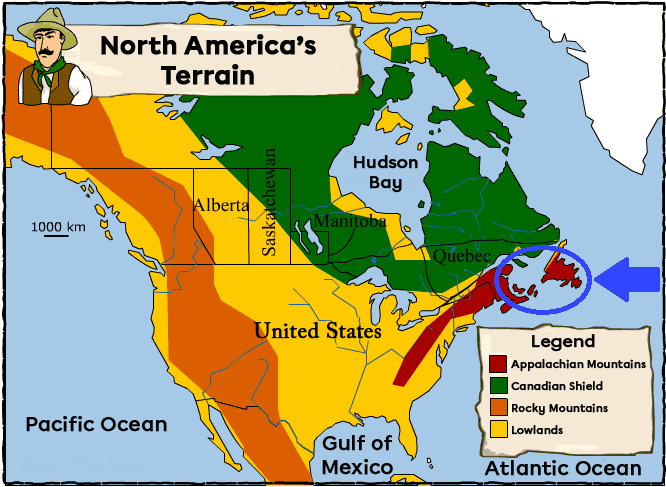The first natural resources to attract Europeans to the coasts of America were whales and, especially, codfish. There was high demand for fish in Europe during the 15th and 16th centuries. Most of the continent’s population was Catholic, and they were prohibited from eating meat on several days of the year, which meant many of them opted to eat fish instead.
Basque, Norman, Breton, Portuguese and English fishers went to Newfoundland in droves after John Cabot broke news of large banks of fish in the region in 1497. They fished there for many months every spring and summer.

Newfoundland and Gulf of St. Lawrence fishing zone
When they were not fishing on their boats, fishers sometimes made the most of their seasonal camping grounds to work on the mainland where they dried codfish on fish flakes and melted whale fat with stone ovens. They established the first interactions with Indigenous peoples during their different stays on these foreign lands.
The newcomers had goods and materials unknown to Indigenous peoples, such as metal tools, utensils, cauldrons and axes, and even glass. They were encouraged to trade or barter with them.
Bartering is the term for economic activities in which goods are exchanged for other goods or services. For example, Indigenous peoples bartered with Europeans by exchanging fur for metal utensils.
Sailors were interested in exchanges, particularly for the meat and especially the fur that Indigenous peoples hunted, which generated large profits when sold in Europe.
The Indigenous peoples’ exchange network enabled fishermen to receive furs from unknown nations and European goods to travel long distances on the new land. This extensive trade network created a real fur trade.
A trade treaty is a type of trading in which only goods, not services, are exchanged.
While most thought trading had a positive influence on the relationship between sailors and Indigenous peoples, some believed otherwise. For instance, the Beothuk of Newfoundland quickly stopped exchanging with newcomers because of the long-term settlements they built.
For many Indigenous groups, the fishermen’s camps were on lands where they traditionally fished over the summer. By spending many weeks on the coasts, Europeans forced Indigenous peoples into contact with them or made them stay inland, which changed their fishing habits.
Indigenous groups along the Gulf of St. Lawrence were more open to exchanges and many changed their hunting habits to be able to barter more. Before the Europeans arrived, Indigenous peoples hunted primarily to meet their needs. Once contact was established with the Europeans, Indigenous peoples started gathering fur over the winter so that they could exchange or trade with them.

